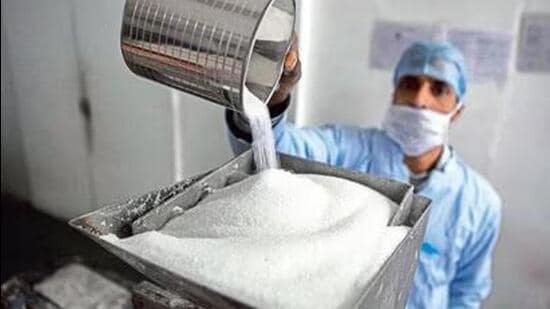Nearly 75% of sugar mills in India, the world’s largest producer of the commodity, have finished operations this month, two months earlier than they normally do, as the country’s output of the sweetener is estimated to have fallen 6-9% to about 30-33 million tonnes in 2022-23, the first major decline in a decade due to weather disruptions.
Experts said the impact of tightening supplies could show up around October-November, the beginning of a long-drawn festival season when demand peaks. The country is the world’s largest consumer of sugar.
Lower output could also hamper India’s ambitious ethanol-blending programme under which the government is moving expeditiously to achieve a 20% target of blending petrol with ethanol.
Mixing of petrol with ethanol, which is made from molasses, a by-product of sugar, helps lessen the amount of oil India imports and supplement farmers’ income. India is the third-largest oil consumer in the world after the US and China.
Households account for 33% of India’s direct sugar consumption. The rest goes into commercial products, such as baked goods, soft drinks and other fast-moving edible goods.
India is such a large producer of many commodities that the impact of domestic output now ripples around global markets. In March, global white sugar prices hit their highest price levels in a decade, according to data from ICE Futures Europe.
The surge was mainly driven by lower global exports and news that India would not allow more overseas sales than the already fixed quota of 6.1 million tonnes, as scanty rains and heat impacted its cane crop for 2022-23. India’s sugar crop year runs from October-September.
“ Our first priority is to keep sugar prices affordable and we have been successful in keeping prices range-bound. The ethanol blending programme comes next. The government has already said that we won’t allow more exports,” an official said, requesting anonymity.
Data showed that production in Maharashtra fell to 10.5 million tonnes from 12.6 million tonnes, while that in Karnataka dropped to 5.5 million tonnes from 5.8 million tonnes, largely due to a patchy monsoon last year.
Sugar is one of the most tightly regulated food items in India, with the government deciding how much of the sweetener millers can sell domestically, at what price, and export. The government also fixes the minimum support price for sugar known as the fair and remunerative price.
Mills have produced 31.1 million tonnes of sugar, after diversion for ethanol, between October 1, 2022 and April 15, 2023 during the current sugar season against 32.8 lakh tonnes in the corresponding period of the last sugar cycle, down 3.6%, according to the Indian Sugar Mills’ Association (ISMA), the top millers’ body.
The body said in its latest monthly update that in the current season, of the 532 sugar mills in production, only 132 continued to operate till mid-April. Until mid-April last year, the number of operational mills was 305.
In the sugar year (October-September) 2022-23, the country is expected to produce 33.6 million tonnes, down 6.4% from a year ago, according to the agriculture ministry’s estimates. This will still leave a surplus of nearly 7 million tonnes, an official said.
This season, the government has targeted to divert 5 million tonnes of sugar to make ethanol compared to 3.6 million tonnes a year ago.
“We are hand to mouth this season. We have appealed to the government to increase MSP, reduce the weight of sugar in the consumer food inflation basket and also allow mills to pay cane farmers in three instalments, so that we can pay them better prices,” said Praful Vithalani of the All India Sugar Trade Association.
ISMA welcomed the government’s decision to set exports at 6.1 million tonnes and allow the export quota to be exchanged with the domestic share of “any other sugar mill within 60 days from the date of issuance of the order”, saying it will ensure liquidation of the surplus stocks. It had hoped to see permission for an additional 3 million tonnes of exports, which is unlikely now.
Vithalani argued farmers could get higher prices if payments are staggered, because millers can share part of interest earned from invested cash.
The larger worry is an increase in swings in weather patterns linked to the climate crisis, which has affected a large number of crops, such as wheat, spices , even vegetables. The decline in sugar output this season was triggered by patchy rains in Maharashtra and Karnataka.

